Display YouTube videos on Drupal site with YouTube field module
| Drupal Development | 11 seen

Recently I started a new topic series - documentaries, where I publish documentaries I have watched and recommend to watch others. I write a brief description of what each documentary is, and then I embed a YouTube link to show a video on my blog.
How To Embed YouTube video in Drupal 8 (CKEDITOR)
But lately I started to think of creating my own Screen-casts, and the idea of embedding a video on content didn't satisfy me anymore.
What I wanted - to populate a video in the field, so later by using views I can display video on top of content, not in the content:
To achieve this, I just needed to add one small module and create a new view.
- Download YouTube module
- Extract it to sites/all/modules
- Enable it from modules page
- Add a new YouTube field to your Content type field
I will not write this time how to create a view containing your video, it's too straightforward if you are familiar with views, if not, please leave a comment below, and I'll guide you through in some of my next posts.
First Month Blogging Results: Blog Statistics October 2013
| Blogging | 1 seen
As a new blogger, it's exciting to reflect on the progress made in the first month of blogging. I've put in a lot of effort to create content, and it's interesting to see the results.
One of the key metrics to track as a blogger is the number of visitors to the site. In the first month of blogging, I had 39 unique visitors. Although this number may not seem high, it's important to remember that the site was only online from October 10th. With more time, I am confident that the number of visitors will increase.
At this stage, my blog is still very young, and it has a PageRank of N/A. I haven't used much social sharing, so it's expected that the number of visitors would be low. However, 39 unique users for a personal blog in its first month is a good start.
As a blogger, it's important to have goals and expectations for the future. I have thought a lot about the statistics I want to achieve. The goal is to reach 6000 unique visitors by the end of October 2014. However, it's difficult to predict where I will be a year from now.
For the next month, my goal is to attract 150-200 unique visitors. I have decided to try Twitter as a way to drive traffic to the blog and attract referrals. This is a new venture for me, and I am excited to see the results.
Blogging is a long-term investment, and it takes time to see results. It's important to be patient and persistent in creating high-quality content. As the blog grows, I will continue to share my progress and insights in the form of online income reports. By tracking my success and failures, I hope to inspire and encourage other bloggers on their journey.
In addition to the number of visitors, there are several other metrics that are important to track as a blogger. These include the average time on site, bounce rate, and the number of page views. By keeping an eye on these metrics, I can see which areas need improvement and make changes to the blog accordingly.
Another important aspect of blogging is search engine optimization (SEO). By optimizing the blog for search engines, I can increase its visibility and attract more organic traffic. Some of the key SEO tactics include using keywords in the blog posts, creating high-quality content, and building backlinks.
One of the best ways to build backlinks is to guest post on other blogs in the same niche. This not only helps to increase the visibility of the blog, but it also helps to establish the blogger as an expert in the field. By writing informative and engaging content, I can attract backlinks from other bloggers and websites.
Social media is another important aspect of blogging. By using social media to promote the blog, I can attract new visitors and build a community of followers. Some of the key social media platforms for bloggers include Twitter, Facebook, and Instagram.
In conclusion, the first month of blogging has been an exciting and educational experience. By tracking the key metrics and making adjustments along the way, I am confident that the blog will continue to grow and reach its goals. By sharing my journey, I hope to inspire and encourage other bloggers on their own journey to success.
30 days Twittering in a row
| Blogging | 4 seen

As you may have noticed, I recently ran a contest for 365 days of consecutive blogging. Now that it's the start of November and I'm brainstorming ways to drive more traffic to my blog, I've decided to give Twitter a try.
The idea is to use Twitter to interact with like-minded individuals and, of course, to promote the content available on my blog. I'm not sure yet whether I'll end up writing a bot to automatically publish tweets to Twitter, but for the next 30 days, I'm committed to manually posting a tweet each day.
Starting my 30-day Twitter contest on November 1st, 2013, I had only five followers on Twitter. By the end of the month, I hope to have 100 followers and at least 50 referrals from Twitter to my website. Does that sound fair enough?
Please follow me: Reinis_Fischer
Getting Started with Building a Drupal Site from Scratch: Content Types, Fields
| Drupal Development | 9 seen

Building a website, whether it's using Drupal or not, requires careful planning and consideration. It's important to determine what the purpose of the website is, who the target audience is, and what value it will bring to your business.
For instance, if the website is for a tourism company that offers fishing, hunting, and skiing tours, the first step would be to gather high-quality photos that showcase the destinations and activities offered. This could involve hiring a professional photographer or using photo editing tools.
In addition, the website should also have descriptive descriptions of each tour, which can be written in-house or by hiring a copywriter to make the text stand out. The tours could also be divided into different levels (beginner, intermediate, advanced) to cater to different audiences.
When using Drupal, it's recommended to start with a minimum installation profile rather than a standard one. This will allow for greater flexibility in creating custom content types that are tailored to the needs of the website.
Keep reading to learn more about how to create Content Types and add fields to tailor your Drupal website to your needs
I guess we can agree on that, that we can create a new content type on the Drupal site called Tours, and enter each tour our company wants as a separate node.
How to add pictures? Again, we must enable Image and Field UI modules, and add an Image field for our content type.
What about those levels? Well, easy - we must enable the taxonomy module, create a new taxonomy vocabulary, and add it to our content type.
If we have a plan before, we can easily adapt it to Drupal.
Now, let's add some values by creating a few nodes:
By adding different fields to our content type, we can achieve a great feature on our Drupal site. That's one of the reasons, I like Drupal so much - it's Agile.
In close future, I'll write more about how to add some more fields to our content type, how to use Drupal views, to build awesome features, and we will apply some basic responsive design techniques by using the Bootstrap theme.
Please feel free to contact me on your next Drupal project :)
Google Analytics (not provided) - how to solve
| Blogging | 6 seen
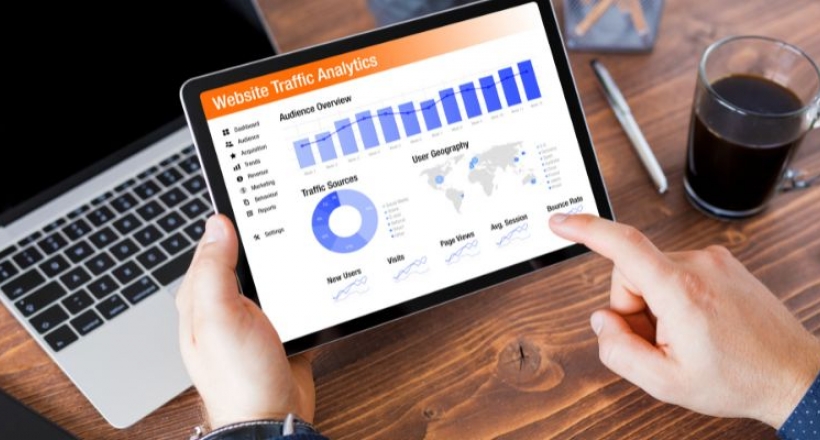
Lately, more and more webmasters (including me) are complaining about huge increase in (not provided) keywords in their Google Analytics reports. Well this actually started to happen, since Google introduced it's new TOS back in March 2012.
[block:block=38]
Update: This tutorial originally was written back in 2013, but it still applies in 2017
I can just agree, how annoying is to see this (not provided).
Seems there is no ultimate solution how to get rid of not provided keywords, but there is a workaround using Google Analytics filters, to filter out these (not provided) keywords and convert them to page title in our Analytics dashboard. As I've said, not an ultimate solution, but still better than nothing, right?
Filter to apply
Go to your Google Analytics dashboard, log in, click on Admin button
- Screen with your sites (site) settings will appear.
- Choose site to apply new filter:
- Click on red button + NEW FILTER.
- Call it Not provided filter
- Filter type: Custom
Advanced
- Field A -> Extract A -> Campaign term -> value (.not provided.)
- Field B -> Extract B - > Request URI -> value (.*)
- Output To -> Constructor -> Campaign term -> value np -$B1
Save this filter. Please not this will not convert previous (not provided) keywords, it applies just for future keywords.
Next time you will check your Analytics, you will see something like this, instead of (not provided)
Hope it helps, if you know some other solution of how to get more insights about not provided keywords, leave a comment, readers and I would love to hear
The Lost World of Communism, Documentary about East Germany (2013)
| Documentaries | 44 seen

The recently released BBC documentary sheds light on the experiences of life in East Germany, providing a deeper understanding of the country's tumultuous past. The film focuses on the deportations of ethnic Germans to Siberia in the late 1940s and early 1950s, highlighting the extreme measures taken by the East German government to maintain control over its citizens.
One of the key features of the documentary is its exploration of the role of the East German security agency, the Stasi, in monitoring and controlling the lives of ordinary people. Through extensive research and interviews with former Stasi officers and citizens who lived through this period, the film provides a chilling account of the pervasive nature of state surveillance in East Germany.
The documentary also touches on the more lighthearted aspects of life in East Germany, featuring episodes of the beloved children's cartoon "Sandsman." Despite the restrictive nature of the regime, the film shows that people still found ways to express their individuality and creativity, even amidst the strict control exercised by the state.
However, the documentary does not shy away from the darker aspects of East German life, including the widespread instances of adultery and rebellion among the population. These stories serve as a testament to the courage and resilience of the people who lived through this period, and the lengths they went to resist the oppressive regime.
Finally, the film concludes with a discussion of the Berlin Wall, one of the most iconic symbols of the Cold War. The film provides a historical context for the construction of the wall and the impact it had on the lives of East Germans and their families.
The documentary is a must-watch for anyone interested in the history of East Germany and the events that shaped the country. It provides a powerful and thought-provoking look at a fascinating and complex period in world history. You can watch it on YouTube.
Future Forecast of GDP in CIS, Baltic States, and Georgia in 2018 - An Analysis
| Macroeconomics | 10 seen

I recently wrote an article exploring the Gross Domestic Product (GDP) of the Commonwealth of Independent States (CIS), Baltic states, and Georgia in 2012. Now, I'm turning my gaze to the future and examining what the economies of the former Soviet Union republics may look like in 2018.
Why 2018? I'm relying on IMF forecasts, and as of now, the closest future projections available from the IMF extend until 2018.
As per the data provided by the IMF, in 2018, the largest economy in the CIS, Baltic states, and Georgia will be Russia, with a GDP of $3 trillion (up from $2 trillion), while the smallest will be Kyrgyzstan with a GDP of $10.7 billion (up from $6.7 billion).
Comparing the economies from 2012 to 2018, the placements will not experience dramatic changes. Russia will remain the leading economy, followed by Kazakhstan and Ukraine. The exceptions will be Uzbekistan and Turkmenistan, which will outperform the Baltic states, such as Latvia and Lithuania, in terms of GDP.
Let's take a look at the percentage change:
Although Russia's economy will soar to reach $3 trillion by the end of 2018, its overall GDP role will decrease by 2% as compared to its 2012 level of 73.2%. On the other hand, Kazakhstan will soar to reach $397 billion by the end of 2018 (up from $201 billion in 2012), resulting in an increase in its role in the overall chart from 7.4% to 9.3%. Ukraine's GDP will grow slowly, resulting in a decrease in its role from 6.5% to 5.6%. All other countries combined will generate 14.4% (up from 12.9% in 2012).
Now, let's examine the GDP per capita level in these countries by the end of 2018.
As per the IMF, by the end of 2018, the highest GDP per capita will be in Estonia, reaching $26,190, while the lowest will be in Tajikistan, accounting for $1,633. This results in a gap of $24,557 between the smallest and largest GDP per capita. Impressive, isn't it?
Kazakhstan is expected to reach $23,630, while Russia will reach $20,970. The third largest economy of the former Soviet Union, Ukraine, will only reach $5,260.
In conclusion, I would like to pose the question: which country will be the first to reach a GDP per capita of $30,000? Will it be Estonia or maybe Kazakhstan? Will it happen by the end of the decade, by 2020?
Upgrading Your Drupal 7 Site: Tips and Tricks for a Smooth Transition (Minor Upgrade)
| Drupal Development | 6 seen

Upgrading a website can be a daunting task, especially if you're not familiar with the process. But upgrading your Drupal site is necessary for security, bug fixes, and new features. In this article, I'll be discussing the process of upgrading a Drupal 7.10 site to the newest version of Drupal, a minor upgrade.
Before you start, it's important to understand the difference between a major and a minor upgrade. A major upgrade, such as upgrading from Drupal 6 to Drupal 7, involves significant changes in the codebase and can result in breaking your site. A minor upgrade, on the other hand, is a more straightforward process that brings small updates and bug fixes to your site. In this article, we'll be focusing on the latter.
The first step in upgrading your Drupal 7.10 site to the newest version is to back up your entire Drupal system, including files and database. This is crucial in case something goes wrong during the upgrade process. You can use a backup module, such as Backup and Migrate, to create a backup of your site. Make sure to store the backup in a secure location, such as an external hard drive or cloud storage.
Once you have a backup of your site, it's time to upgrade. The process of upgrading a Drupal 7.10 site to the newest version of Drupal involves two steps: updating the codebase and updating the database.
To update the codebase, you can use the manual method or the drush method. The manual method involves downloading the latest version of Drupal from the official website and uploading it to your server. Then, you'll need to copy the settings.php file and the files directory from your old site to the new site. Finally, you'll need to run the update.php script to complete the upgrade.
The drush method is a more efficient way to upgrade your site, as it automates the process. If you have drush installed on your server, simply run the following command:
drush up drupal
This command will update your Drupal site to the newest version.
Once the codebase has been updated, it's time to update the database. To do this, you'll need to log into your site as an administrator and run the update.php script. This script will perform any necessary database updates, such as updating the schema and data structures.
It's important to note that the update.php script should only be run once. Running it multiple times can cause issues with your site.
After the update.php script has been completed, you'll need to clear the cache and check your site to make sure everything is working as expected. If you encounter any issues, it's important to address them immediately. You can use the backup you created earlier to restore your site if necessary.
In conclusion, upgrading your Drupal 7.10 site to the newest version of Drupal is a straightforward process that can bring many benefits to your site, including security, bug fixes, and new features. By following the steps outlined in this article, you can ensure a smooth upgrade process and avoid any potential issues. Remember to always back up your site before upgrading and to address any issues as soon as they arise.
Georgian Fishing tours: Jandari lake
| Lakes | 41 seen
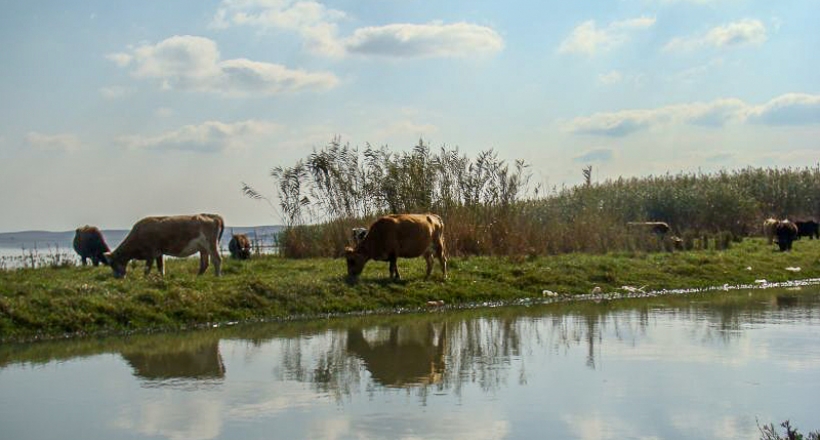
I first met Giorgi from Georgian fishing tours back at the end of 2013, when we did a fishing tour at Jandari lake organized by his company. I noticed a free fishing tour offer on their Facebook page. I claimed that offer and I was the lucky to actually get a free fishing tour. Make sure you follow their Facebook page as well - who knows, maybe more such offers will follow. If not - price for such tours are not very expensive and is worth of every tetri spent.
So, that's how I get familiar with Girogi and his friend Temo from Georgian Fishing tours. Couple of days later a fishing tour to Jandari lake near border of Azerbaijan was organized.
Girogi arrived to our apartment at around 4AM in his 4x4 wheel Nissan car, he had prepared spinnings, nets, bait and all the rest what is necessary for a decent fishing tour, we just took a waterproof clothing, boots and some snacks.
We arrived on site about after an hour drive (which led us through Rustavi town). It was still dark and I had an option to capture sunrise over Jandari lake
Sunrise over Jandari lake
I was limited to my old Sony DSC camera (bridge camera), which was still able about two years latter post - post - processed in Adobe Lightroom get me a decent exposures from here. See: Digital photography school
Dozens of cows at Jandari lake
From the left: Giorgi, author of this blog and other fishermen
I'm not addicted fisherman, so I don't know much about fishing actually, Giorgi was keen to give me a quick lesson on basics, like how to throw spinning correctly in the water and so on...
Fishermen boat in Jandari lake
Author of this blog captured in action
4x4 wheels
To get here to Jandari lake, a 4x4 wheel is a must have. Georgian Fishing tours had that Nissan SUV car .
Water reflections on Jandari lake
Author of this blog captured in action
The bottom line
Cows, a lot of fish, homemade vodka (chacha) and plenty of great emotions. Our catch that day - about 8 kilos of fish (most of our catch was actually caught by Girogi and his friend, we got the cath as a present - that's what passionate fisherman does - they catch the fishes, they don't eat them)
Thank's Giga and Temo for such a wonderful expierence!
Learn more about tours: Georgian Fishing Tours or Facebook
The Aftermath of the Soviet Union: Exploring the Economies of the CIS, Baltic States, and Georgia (2012)
| Macroeconomics | 5 seen

The collapse of the Soviet Union in 1991 marked the end of a massive political and economic entity, leading to the creation of several independent states. The Commonwealth of Independent States (CIS), Baltic states, and Georgia are some of the countries that emerged from the Soviet Union's ashes.
But what happened to these countries after the collapse and what has become of their economies in the present day?
First, let's take a look at the economy of the former Soviet Union countries as a whole. In 2012, the nominal Gross Domestic Product (GDP) of these countries stood at 2.732 trillions USD, with Russia leading the pack as the largest economy. This is not surprising, considering Russia is the world's largest country and has the largest population. On the other hand, Kyrgyzstan, the smallest economy, accounted for just 6.7 billion USD of the total GDP.
When we break down the GDP into percentage units, a clearer picture emerges. Russia accounted for a staggering 73.2% of the total GDP, followed by Kazakhstan at 7.4% and Ukraine at 6.5%. The remaining countries contributed only 12.9%.
The upcoming Eurasian Union, which includes Russia, Kazakhstan, Belarus, and Armenia, has received mixed reactions, with some people laughing at the idea of its creation. However, with two of the largest economies of the former Soviet Union on board and more expected to join, this bloc could become one of the top 5 economies in the world in the future. Ukraine has expressed its intention to join the European Union, which could be seen as a loss for Russia's ambitions, but it is yet to be seen what the future holds.
When it comes to GDP per capita, the picture is different. In 2012, the highest GDP per capita was in Estonia, reaching 16.31 thousand USD, while the lowest was in Tajikistan, standing at just 870 USD per capita. Based on the GDP per capita, the Baltic states, Russia, and Kazakhstan had the best conditions, while the worst situation was in Central Asia (Uzbekistan, Kyrgyzstan, and Tajikistan). However, the gap between these countries and the developed economies of the world is still relatively narrow.
It is fascinating to observe the separate development of each of these countries, as well as their progress when grouped together. Which of these countries will reach a 20 thousand USD GDP per capita first? Only time will tell, but it will be interesting to see if it will be Estonia, Kazakhstan, or Russia leading the way.
In conclusion, the aftermath of the Soviet Union has led to the creation of several independent countries with unique economies, each on its own path to growth and development. The CIS, Baltic states, and Georgia have come a long way since the collapse of the Soviet Union and it will be exciting to see how their economies evolve in the future.
Georgia's Next President: Giorgi Margvelashvili Takes Office (2013)
| Living in Georgia | 4 seen
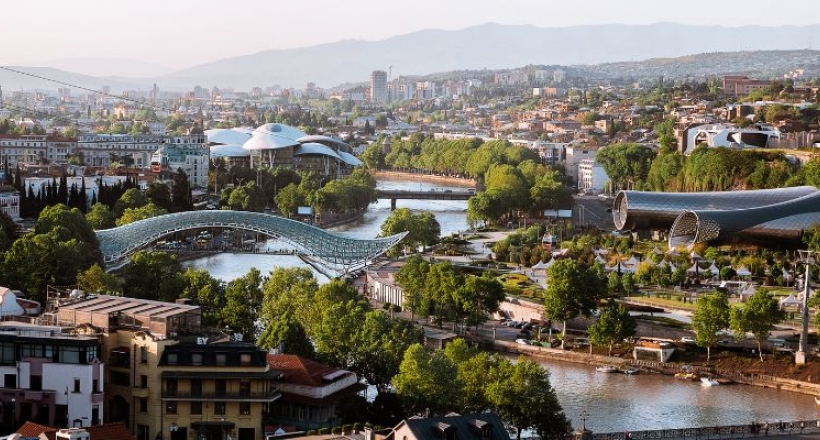
Yesterday, Georgia held a presidential election and the winner, according to exit polls, is Giorgi Margvelashvili. He will serve as the country's president for the next five years.
In a previous article, I stated that I had limited knowledge about Margvelashvili. Despite this, I predicted his victory. And now, I have a feeling that after his five-year term, he may become a well-respected figure in Georgian society.
You may argue that he's already popular, given that he won with around 68% of the vote. But the truth is, his popularity is linked to Bidzina Ivanishvili, who appointed him. In fact, many Georgian news portals did not even mention his name in their election coverage, instead referring to him as the "candidate from the Georgian Dream".
Some have said they don't care who the new president is because they are still bitter about the previous administration led by Mrs. Sakashvili. Meanwhile, voter turnout was relatively low, with only about 45% of eligible voters casting their ballots.
I hope that the newly elected president has the determination and will to work towards a better Georgia for all its citizens during his five-year term. And, I am confident that with the help of PR agencies, Margvelashvili will gain the trust and support of the Georgian people, regardless of initial opinions.
Spellchecker for TinyMCE WYSIWYG Drupal
| Drupal Development | 4 seen

TinyMCE is a popular WYSIWYG (What You See Is What You Get) editor used in Drupal and many other content management systems. It is a powerful tool that allows users to easily create and edit rich content, including text, images, and videos. However, one feature that is missing from the default TinyMCE editor is a spellchecker, which can be a major inconvenience for content creators.
Fortunately, there are several options available for adding a spellchecker to TinyMCE in Drupal. In this article, we will look at some of the most popular and effective methods.
To use the WProofreader plugin, simply download and install it on your Drupal site. Then, enable it in the TinyMCE settings and configure it to your liking. You can choose from a variety of languages and customize the spellchecking options to meet your needs.
To use the SpellChecker.net API, you will need to sign up for an account and obtain an API key. Once you have the key, simply download and install the plugin on your Drupal site, and configure it to use your API key.
To use the Drupal Spellcheck module, simply download and install it on your Drupal site, and enable it in the TinyMCE settings. You can then configure the module to your liking, including setting the default language and adjusting the spellchecking options.
In conclusion, adding a spellchecker to TinyMCE in Drupal is an important step for improving the accuracy and professionalism of your content. Whether you choose to use the WProofreader plugin, the SpellChecker.net API, or the Drupal Spellcheck module, there are several effective solutions available to meet your needs. With these tools at your disposal, you can ensure that your content is error-free and polished, and that your readers are getting the best possible experience.
Filtering Popular Posts on Drupal: How to Filter by Time Frame with Views
| Drupal Development | 20 seen
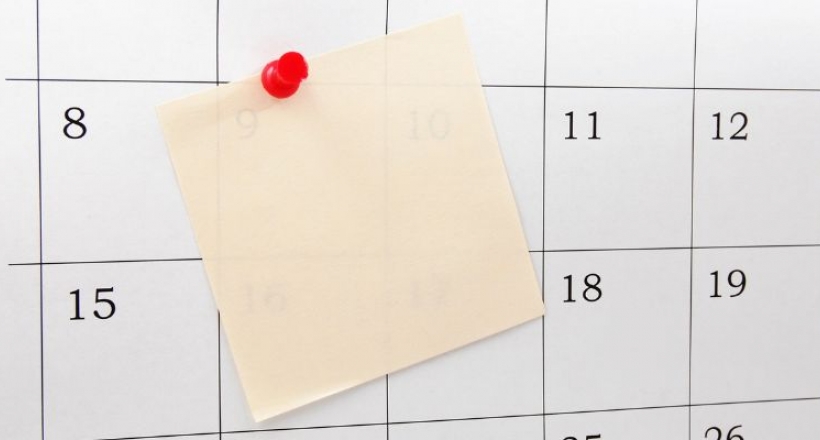
In a previous tutorial, I showed how to use Views to filter popular posts on a Drupal site. Today, I will demonstrate how to filter popular posts within a specific time frame, such as a week or a month.
Note that this tutorial will only apply filters to the most viewed nodes based on their publishing date, not to all nodes within a certain time frame.
If you haven't already set up a popular blog post View, please refer to the link above and follow the steps to create your View.
To begin, open your popular blog post View and add a new filter under the "Filter" section. Select "Content: Post date" and choose "Operator: is between" in the filter settings.
In the "Min" field, enter the time frame you want Drupal to filter, for example, if you want to filter posts from the last 10 days, enter "-10 days" as the offset. In the "Max" field, enter the current time to ensure that future posts are not included in the filter.
If you have any questions or issues with this process, please leave a comment below and I will be happy to assist you.
From Shevardnadze to Garibashvili: A History of Georgia's Prime Ministers
| Living in Georgia | 22 seen
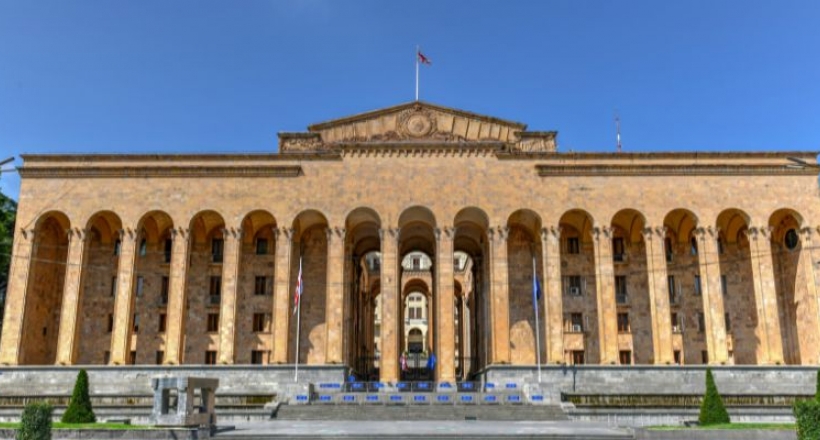
Georgia is a country with a rich political history, with many notable figures serving as its prime minister. In this article, we will take a closer look at the prime ministers of Georgia, highlighting their contributions to the country and their impact on Georgian politics.
Tengiz Sigua (1990-1992) Tengiz Sigua was the first prime minister of independent Georgia following the collapse of the Soviet Union. He played a crucial role in stabilizing the country during its transition to democracy and free-market economics.
Eduard Shevardnadze (1992-2003) Eduard Shevardnadze served as prime minister of Georgia from 1992 to 2003. He is credited with leading Georgia through a period of economic reform and modernization, as well as for strengthening the country's relationship with the West.
Zurab Zhvania (2004-2005) Zurab Zhvania served as prime minister of Georgia from 2004 until his untimely death in 2005. During his tenure, he focused on improving Georgia's economic situation and implementing political reforms.
Mikheil Saakashvili (2004-2007) Mikheil Saakashvili was appointed as prime minister of Georgia in 2004, and later became the country's president. He is credited with instituting a series of political and economic reforms, including an anti-corruption campaign and efforts to modernize the country's infrastructure.
Bidzina Ivanishvili (2012-2013) Bidzina Ivanishvili served as Georgia's prime minister from 2012 to 2013. He is known for his business acumen and his efforts to improve Georgia's economy and reduce corruption.
Giorgi Kvirikashvili (2015-2018) Giorgi Kvirikashvili was appointed as Georgia's prime minister in 2015, and served until 2018. During his tenure, he focused on implementing economic reforms and strengthening Georgia's relationship with the West.
Mamuka Bakhtadze (2018-2019) Mamuka Bakhtadze served as prime minister of Georgia from 2018 to 2019. He is known for his efforts to reduce corruption and promote economic growth in the country.
Giorgi Gakharia (2019-2021) Giorgi Gakharia served as Georgia's prime minister from 2019 to 2021. He focused on implementing reforms to improve the country's economy and reduce corruption, but resigned in February 2021 due to a disagreement with his party over the arrest of a political opponent.
Irakli Garibashvili (2021-present) Irakli Garibashvili was appointed as Georgia's prime minister in February 2021. He has pledged to continue the country's economic and political reforms, and to strengthen its relationship with the West.
In conclusion, the prime ministers of Georgia have played a crucial role in shaping the country's political and economic landscape. From the first prime minister of independent Georgia to the current leader, each of them has made significant contributions to the development of the country. Their legacies continue to shape Georgian politics today.
The Top Peaks in Georgia: A Guide to the Country's Highest Mountains
| Travel guides | 44 seen
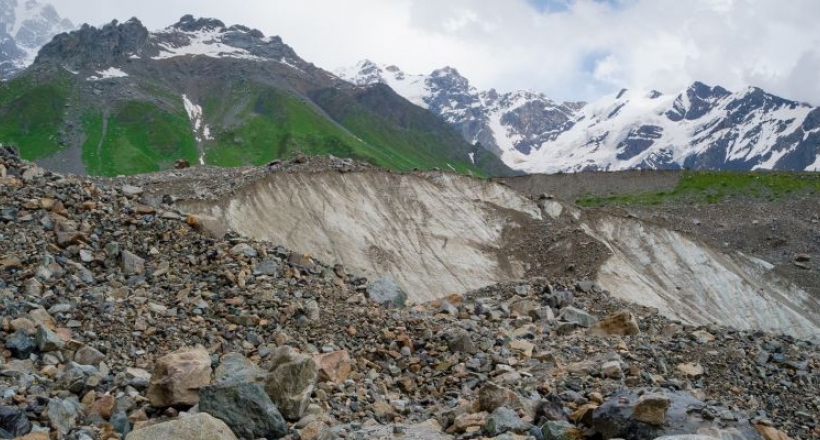
Georgia is a country known for its stunning mountainous landscapes, with several peaks reaching over 4,000 meters in elevation. From the Caucasus range to the Svaneti region, Georgia offers a plethora of opportunities for mountaineering and hiking enthusiasts.
Here are the highest mountains in Georgia that are worth exploring:
Mount Shkhara: At 5,068 meters, Mount Shkhara is the highest peak in Georgia and the third-highest in the Caucasus range. Located in the Svaneti region, this mountain is a popular destination for climbers and offers stunning views of the surrounding valleys and glaciers.
Mount Janga: Located in the Samegrelo-Zemo Svaneti region, Mount Janga is the second-highest peak in Georgia, standing at 5,059 meters. It is part of the Bezengi Wall, a popular destination for climbers in the Caucasus range.
Mount Kazbek: Standing at 5,047 meters, Mount Kazbek is the third-highest peak in Georgia and one of the most recognizable mountains in the country. Located in the Kazbegi region, this mountain is a popular destination for mountaineers and trekkers, offering stunning views of the surrounding landscapes.
Tetnuldi: At 4,858 meters, Tetnuldi is the fourth-highest mountain in Georgia, located in the Svaneti region. It is a popular destination for skiing and snowboarding, with several ski resorts located in the area.
Mount Ushba: Standing at 4,710 meters, Mount Ushba is a twin-peaked mountain located in the Svaneti region. It is a popular destination for climbers, offering challenging routes and stunning views of the surrounding landscapes.
These are just a few of the highest mountains in Georgia, but there are many more peaks and ranges to explore in this beautiful country. Whether you're an experienced mountaineer or a casual hiker, Georgia offers a range of options for all skill levels, with breathtaking landscapes and unparalleled natural beauty at every turn.
Latest video

Tsikhisdziri & Batumi Botanical Garden
After returning from our amazing trip to Thessaloniki, we decided to extend our holiday a bit longer — this time in beautiful Tsikhisdziri. Huge thanks to Eto for kindly offering her cozy apartments at Bambo Beach, where we enjoyed a full week of relaxation by the sea.During our stay, we explored local gems like Shukura Tsikhisdziri (შუქურა…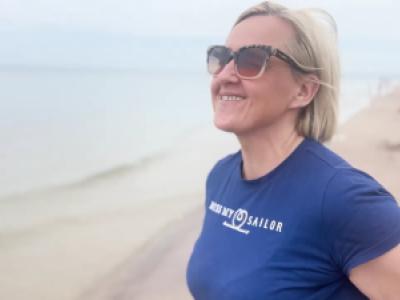
Summer in Latvia 2025
Summer in Latvia movie is out - Join us on our July (2025) journey through Latvia: installing a bathtub in our countryside cottage, setting up a pop-up store at Bangotnes, celebrating a birthday in Vērbeļnieki, traveling via Riga to Jaunpiebalga, Vecpiebalga, Smiltene, and Valka. From sipping sparkling wine with swallows to running 4K morning…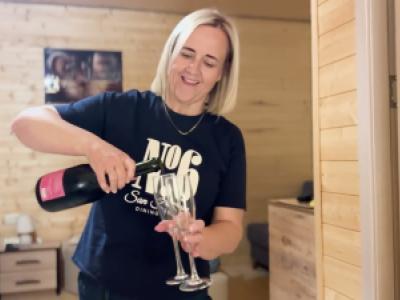
Chateau Ateni. Gori
This time (May 2025), our journey takes us to Gori and the enchanting Chateau Ateni - a hidden gem where authentic Georgian cuisine blends seamlessly with avant-garde natural wines, soulful traditional dance, and even the charming surprise of a small chick farm.What makes this trip extra special is sharing it with our Latvian/Georgian friends,…Living in Georgia

12 Rounds Boxing Club in Tbilisi
Sometimes even the most loyal gym-goers need to shake things up—and that's exactly what I did this month. After years of training at the "luxurious Axis Tower gym", I decided to take a short break. Not because I had any complaints about…
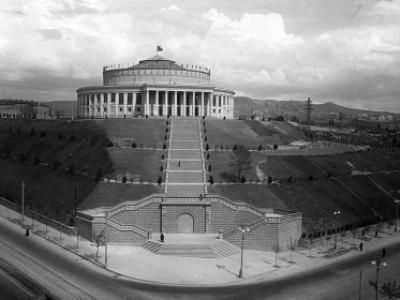
Tbilisi Circus: A Historic Landmark with a Surprising Past
Tbilisi Circus is an iconic part of the city's cultural landscape. Having lived in Georgia since 2011, I have passed by the Tbilisi Circus almost every day. However, it wasn’t until I attended a show that I truly appreciated its grandeur…
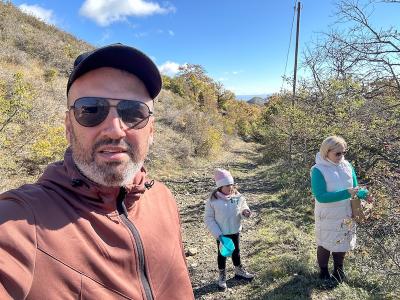
Foraging for Mushrooms near Tsodoreti Lake: A Day in the Suburbs of Tbilisi
Back in June 2024, I first came across Tsodoreti Lake during one of the Tbilisi Trails races, which turned out to be one of the most challenging runs of my life. While I tackled the 10K trail route, my partner and our kiddo took a gentler…
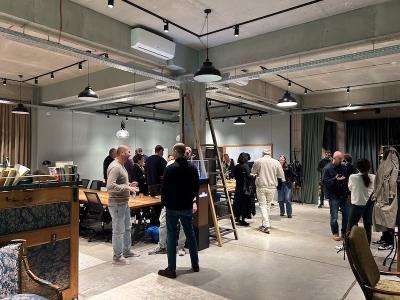
Axel Georgian Business Angel Networking Event: Exploring Opportunities in Tbilisi
In mid-October 2024, I had the pleasure of attending the Axel Georgian Business Angel networking event, held right here in Tbilisi. Having passively observed the Georgian tech scene for over a decade, this event provided the perfect…
Frame House

Frame House Upgrades: Big Windows, New Porch, and Apple Trees Planted in Latvia
In mid-April, during our kiddo’s Easter school break, we traveled to Latvia for about 10 days — a trip packed with projects, energy, and transformation. A lot of pre-planning had gone into it before we even arrived: we ordered the windows…
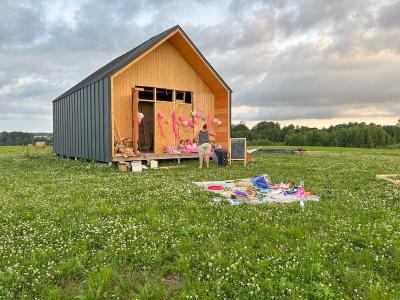
Frame House in Latvia: Outdoor Patio, Inner Walls, and More
As June came to an end, our family embarked on a journey from Tbilisi to Latvia, skipping Renee's school year for the last week and focus on our frame house project. Here's a glimpse into our busy but rewarding time working on the house.We…
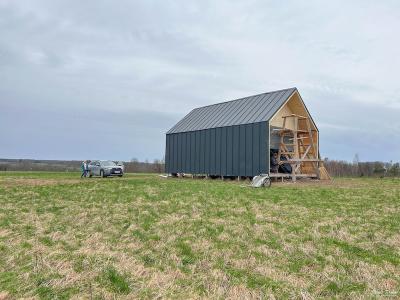
Spring Break Project: Building Progress on Our Frame House in Latvia
As the chill of winter slowly gives way to the warmth of spring, it's the perfect time to roll up our sleeves and dive back into the construction of our dream frame house in Latvia. During this Spring break from British International…
Piece of Life

Postcards from Marseille
It’s been nearly two years since our last trip to Marseille, a sun-drenched jewel on France’s southern coast that left an indelible mark on our memories. That summer of 2023, we set out to explore the city’s vibrant beaches and winding old town, arriving and departing through the bustling hub of Marseille St. Charles train station. As I sit…
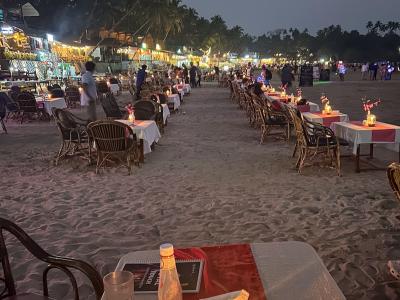
Christmas Eve at Palolem Beach: Fire Shows, Old Monk
While we just celebrated Orthodox Christmas in Georgia, I can’t help but delve into the memories of our Western Christmas last year (2024), spent on the serene shores of Palolem Beach in Goa, India. That evening was magical in every way, filled with vibrant energy, beautiful scenery, and a new discovery that made the night unforgettable.Palolem…

A Family Guide to Borjomi: Hiking Trails and Sulfur Bath Tips
As summer came to a close, we continued our family's tradition of visiting Borjomi. This year marked yet another memorable trip at the end of August 2024, reaffirming our love for this beautiful Georgian town. Visiting Borjomi at least twice a year has become a cherished routine, a piece of life that we look forward to, blending relaxation,…
Travel guides

Summer in Latvia 2025
Summer in Latvia movie is out - Join us on our July (2025) journey through Latvia: installing a bathtub in our countryside cottage, setting up a pop-up store at Bangotnes, celebrating a birthday in Vērbeļnieki, traveling via Riga to…

Birthday in Thessaloniki, Greece
Turning 40 is a milestone worth celebrating in style, and what better way than in Thessaloniki — a city that seamlessly blends history, culture, and cuisine. From affordable flights and boutique stays to seafood feasts and hidden beaches,…
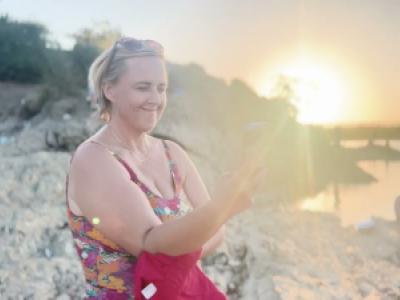
Azeula Fortress, Tbilisi Sea, and Ateni Sioni
August ended with yet another packed and memorable weekend in Georgia. This time, our journey took us from the hills near Kojori to the refreshing waters of the Tbilisi Sea, and finally to the historical town of Gori, where we enjoyed a…
Hotel Reviews
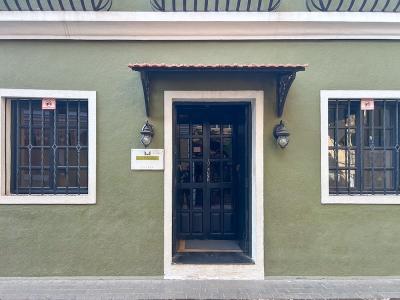
Stays & Trails La Maison Hotel Review in Panaji
At the tail end of 2024, just before catching our flight back to Delhi, we decided to book a one-night stay at Stays & Trails La Maison Fontainhas in Panaji, Goa. After weeks staying in Palolem beach, we wanted to wrap up our trip with…
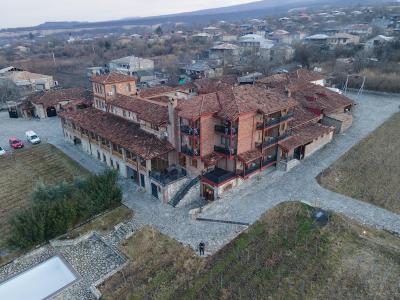
Schuchmann Wines Château: A Long-Awaited Stay in Georgia’s Premier Winery Hotel & Spa
It took us over a decade to finally make it to Schuchmann Wines Château & Spa, and it was well worth the wait! We’ve spent years recommending this stunning winery hotel to visiting friends and business partners, yet somehow, we had…
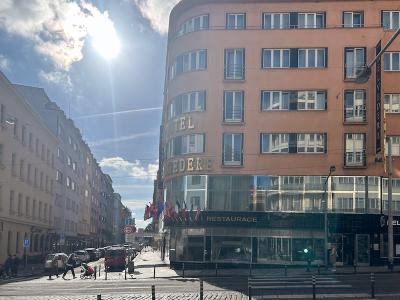
Hotel Belvedere Prague: A Practical Stay with Easy Access
During our recent trip to Prague in mid-October 2024, we stayed at Hotel Belvedere. My partner attended the MEET Central Europe Translators conference, and we were joined by one of our office employees, so we opted to book two rooms. …
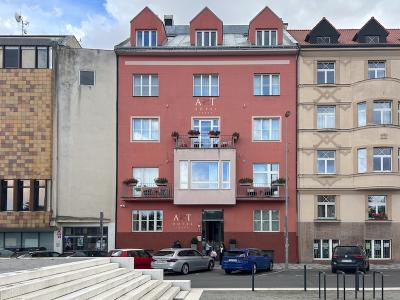
Review: Art Hotel Prague – A Cozy Stay in a Tranquil Part of Prague
During our recent trip to Prague in October 2024, we opted for a one-night stay at the Art Hotel Prague. We arrived at the hotel via Bolt taxi from Václav Havel Airport, which was straightforward and efficient. At about EUR 120 per room…
Toursim objects
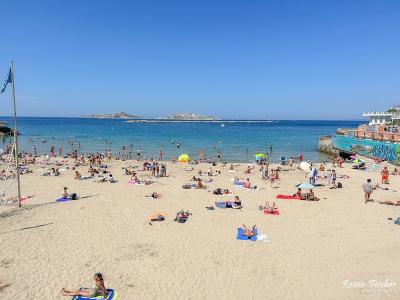
Plage des Catalans: A Shrinking Memory in Marseille
Plage des Catalans, a sandy crescent tucked along Marseille’s coastline, holds a special place in my travel tapestry. I first visited this beach in the summer of 2003, a carefree stop during my early adventures in the city. Back then, it felt like a haven—close to the bustling port yet offering a slice of Mediterranean calm. When I returned…

Colva Beach: Golden Sands and Tranquility in Goa
Colva Beach, located in South Goa, is known for its expansive golden sands and tranquil atmosphere. Stretching for several kilometers along the Arabian Sea, the beach offers a peaceful escape from the busier tourist hubs in the region. Its wide shoreline, framed by swaying palm trees, provides plenty of space for visitors to relax, stroll, or…

Charles Bridge: A Timeless Landmark in Prague
The Charles Bridge (Karlův most) in Prague is one of the most iconic and historic landmarks in Europe. Built in the 14th century under the reign of King Charles IV, this Gothic stone bridge spans the Vltava River, connecting Prague's Old Town with the Lesser Town (Malá Strana). Adorned with a series of 30 Baroque statues and surrounded by…
Macroeconomics
| GDP Growth in the Baltic States (2016–2025) | |
| Minimum Wages in European Union 2024 | |
| Minimum Wages Set to Increase in Baltic States in 2024 | |
| GDP Per Capita in OECD countries 2022 |
Servers and Drupal
Genealogy
| Baltic German DNA Uncovered: Tracing My Ancestry to the von Anrep Nobility | |
| MyHeritage DNA test result | |
| MyHeritage DNA test, flight to Tbilisi, Stock Recovery |